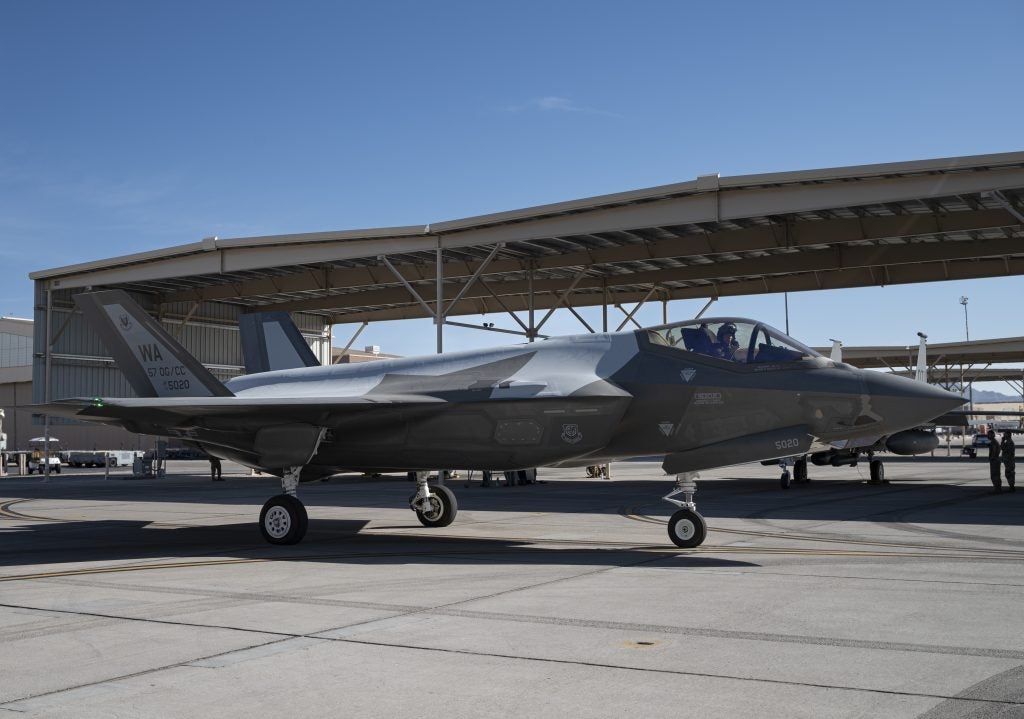U.S. Air Force: New Aggressor Paint Scheme Won’t impact F-35’s stealth
The United States Air Force says its latest Aggressor Squadron’s paint scheme shouldn’t interfere with the stealth qualities of the F-35A Lightning II.
The 65th Aggressor Squadron’s first F-35As are painted in a “splinter” scheme that resembles the camouflage on the Su-57 and J-20, continuing the long-held tradition of current and past aggressor aircraft painted in schemes resembling those of aircraft operated by adversary nations.
“Nellis maintenance personnel applied alternate paint to create the unique camouflage scheme after coordination with the F-35 Joint Program Office,” a Nellis spokesperson said in an emailed response to Air Force Magazine.
“Further testing will be required to discern if there is a difference in the low-observable properties. A standard Air Force aircraft paint was used for the paint scheme, and [Lockheed Martin] engineers approved the use and process of paint application.”
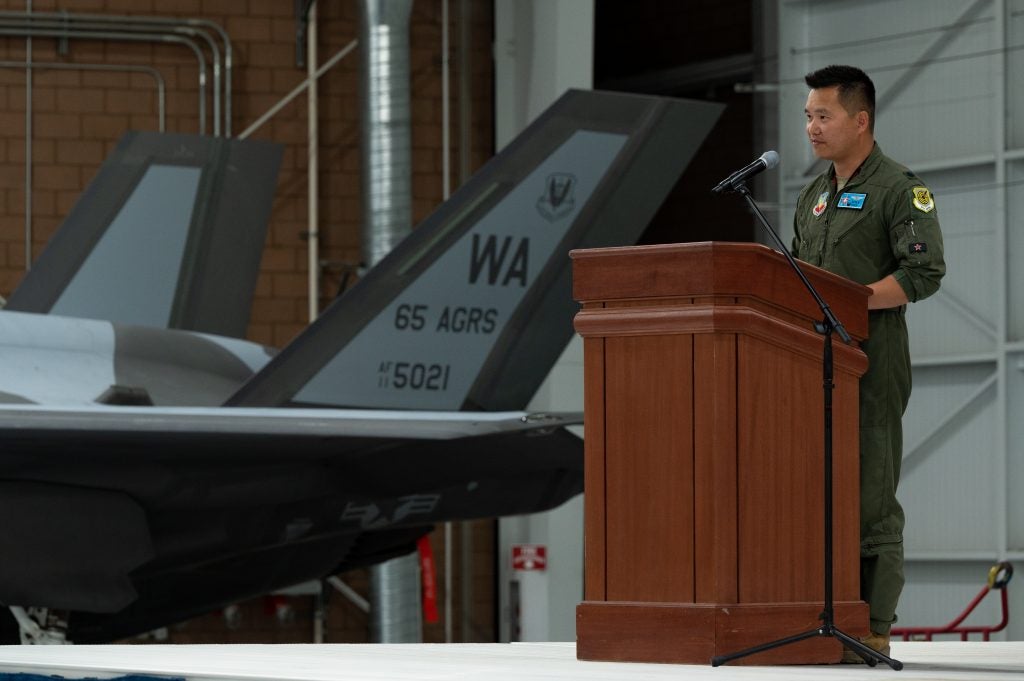
The F-35’s signature dark-grey finish is believed to be the result of low-observable coatings applied to the aircraft to ensure its stealthiness. Similar finishes are believed to be in use with the F-22, while F-16s repainted in the new HAVE CLASS V paint scheme also have a dark grey finish believed to have stealth-enhancing characteristics.
“While the application of the alternate paint is a first, we do not anticipate it will have any adverse impacts on the F-35’s low-observable properties,” the spokesperson told Air Force Magazine. “The alternate paint can be removed at any time to return our aircraft to the original configuration.”
About the 65th AGRS
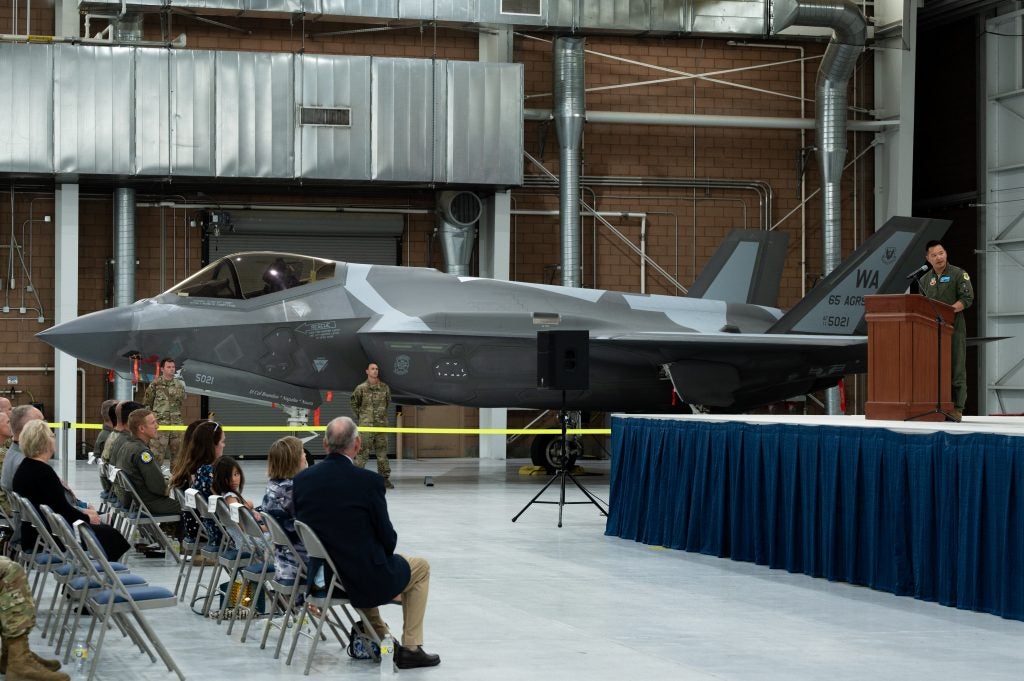
The U.S. Air Force reactivated its 65th Aggressor Squadron as a dedicated F-35A aggressor unit on the 9 June. The reactivation ceremony was held at Nellis Air Force Base, Nevada, and was attended by Col. Scott Mills, 57th Operations Group commander, and Lt. Col. Brandon Nauta, commanding officer of the newly-activated 65th Aggressor Squadron.
According to the Air Force press release, Air Combat Command commander Gen. Mark Kelly flew his F-15E Strike Eagle against the unit’s first assigned F-35 piloted by, Lt. Col. Brandon Nauta, before the ceremony.
The 65th Aggressor Squadron is one of the three original Aggressor Squadrons that were created by the Aggressor Program, which was established in the 1970s following high loss ratios in aerial combat over Vietnam. Aggressor squadrons were to employ tactics, techniques, and procedures similar to that of the enemy, sometimes even using captured enemy aircraft. Ever since their establishment, the units have provided Dissimilar Air Combat Training (DACT) to thousands of new students.
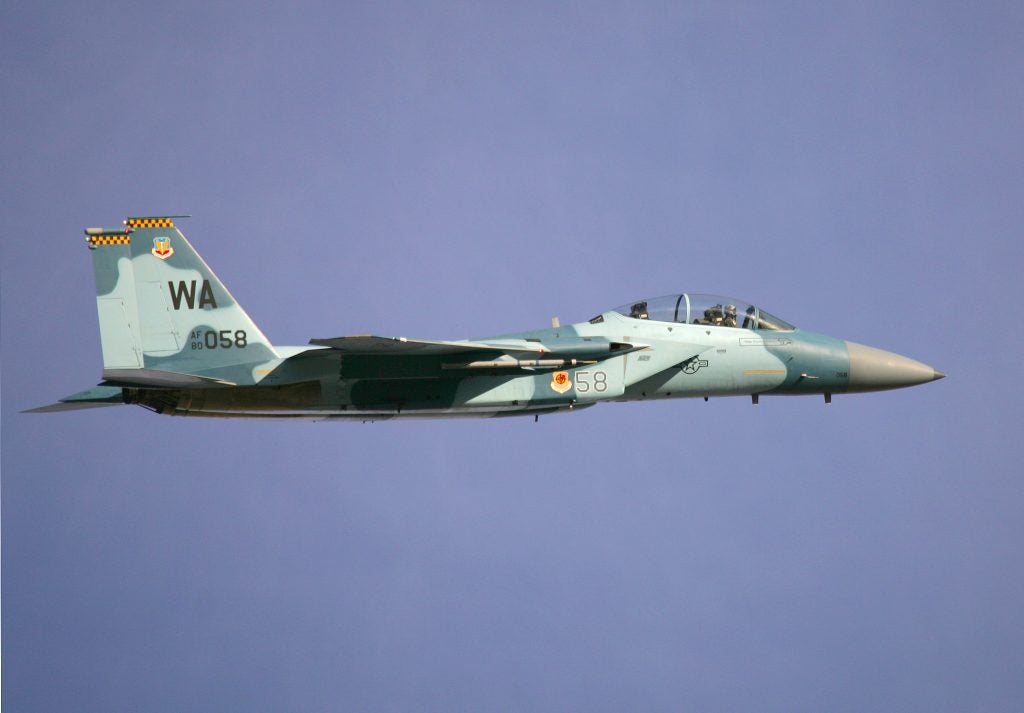
The 65th AGRS initially flew with the F-5 from 1975 until its deactivation in April 1989. The unit was reactivated in 2005, flying aggressor F-15Cs until being deactivated again in 2014. The new squadron will combine forces with its sister squadron at Nellis AFB, the 64th Aggressor Squadron, which currently flies F-16s. Together, the squadrons will form a formidable training asset for the Air Force and its partners.
The Air Force currently fields two aggressor squadrons, the 64th Aggressor Squadron and 18th Aggressor Squadron, with both squadrons flying fourth-gen F-16s. But with Russia and China beginning to field fifth-gen aircraft such as the Sukhoi Su-57, Chengdu J-20, and Shenyang FC-31, Air Force Aggressor squadrons have had to adapt to the changing environment and provide training against fifth-gen platforms.
While the stand-up of a dedicated fifth-gen aggressor is a major step by the Air Force to address this growing need, many recent exercises such as RED FLAG and Northern Edge involved F-22s and F-35s playing an aggressor role.
Focus on China
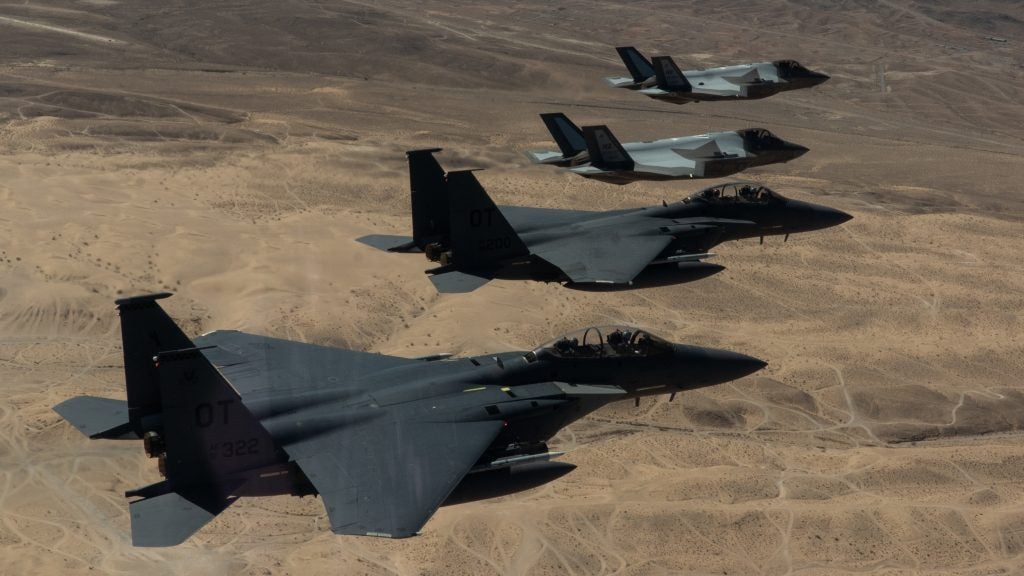
During the reactivation ceremony Lt. col. Brandon brought up the importance of the unit when it comes to facing the People’s Liberation Army Air Force (PLAAF). “Due to the growing threat posed by PRC fifth- and sixth-gen fighter development, we must use a portion of our daily fifth-generation aircraft today at Langley, Elmendorf, Hill, Eielson, and now Nellis, to replicate adversary fifth-generation capabilities,” commander of Air Combat Command Gen. Mark D. Kelly said. “Precisely because we have this credible threat, when we do replicate a fifth-gen adversary, it has to be done professionally. That’s the Aggressors.”
The emphasis on the PLAAF is rightly placed, as it’s believed that the PLAAF currently fields the second-largest number of fifth-gen airframes, second only to the USAF. It has stood up one J-20 Air Brigade in all five-theater commands as well as two training brigades. Each Air Brigade has 30 airframes when fully equipped, this would put the number of J-20s at 150 when these brigades are fully equipped.
However, current analysis indicates that not all of the brigades are fully equipped, as such the number of J-20s that have been Identified stands at slightly near 100. Nonetheless, the number of J-20s produced and fielded is higher than Russia’s four production specification Su-57s.
The reactivation of the 65th AS is a monumental event for the Air Force and highlights Washington’s growing reorientation to the Pacific theater. The squadron itself is part of a wider effort to step up training in the Air Force by using more capable systems that can better replicate adversary systems.

